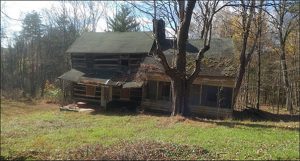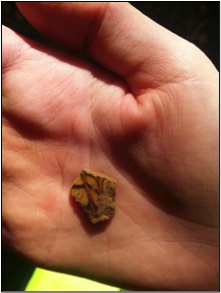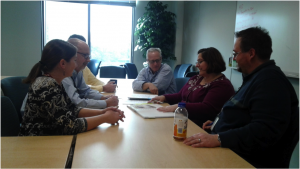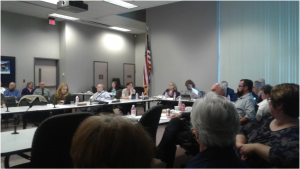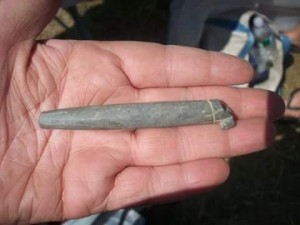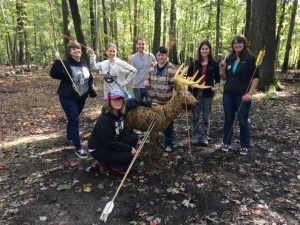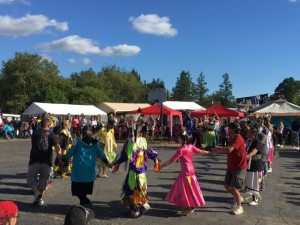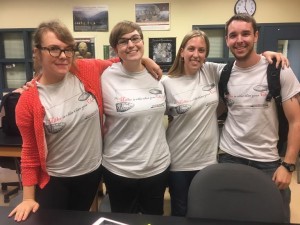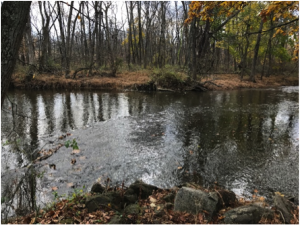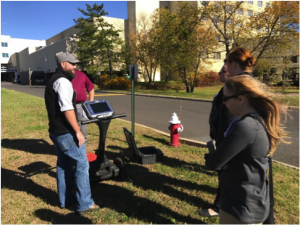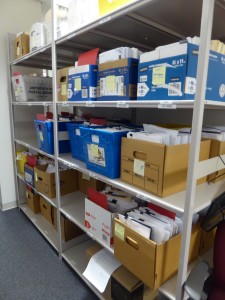By: Danielle Kiesow
A wise man once told me, “You need to remember what makes you a good procrastinator: confidence!” That wise man is my father, and while he might deny he ever endorsed my habit, it’s that confidence (whether procrastinating or actually getting work done) that has carried me through the Applied Archaeology program here at IUP. I’m now a second year graduate student, just one semester and one completed thesis shy of graduating. I am so happy that I chose IUP to continue my archaeological education: I have learned so much about North American archaeology, laws and ethics in cultural resource management, and about myself.
By far the hardest part of grad school is learning time management. Only three classes (nine credits) are required per semester for this program, and coming out of regular 15-18 credit semesters in undergrad, I didn’t think much of it until syllabi day at the beginning of my first semester. The first year of grad school in this program is more difficult than the second year because you’re adjusting to a new location (in my case, transplanting from Wisconsin and going through cheese curd withdrawal), in some cases getting back into school after a hiatus, getting to know your cohort and your professors, and panicking because you can just see your thesis looming on the horizon.
But don’t worry! By the second year of this program you’ve gotten into the swing of things and you’ve become closer to your cohort (and you’ve realized there’s such a thing as Wine Festivals on campus). Your thesis topic is tackled head-on in the first Cultural Resource Management course, so once you have an idea and a support system in your thesis committee you just have to keep on plowing through, one chunk at a time.
After courses this spring, I will be heading back to the Midwest to northern Minnesota to work with Grand Portage National Monument on the Grand Portage Reservation as an archaeological technician for about a year and then after that, we’ll see what happens! Interning for the National Park Service over the past two summers and learning how and why archaeology is done in North America through this program has made it possible for me to find a job right after classes. There are also some things I learned outside of classes that I thought would be useful for those considering archaeology or for those in the program here:
- The archaeological community is smaller than you think and a lot of job opportunities boil down to who you know, not what you know. If you say anything negative about another archaeologist or if you don’t have a good attitude or good work ethic out in the field, that will travel and future employers will know.
- Don’t be afraid to speak up and ask questions in class. Make all those student loans worth it!
- Grad school can be overwhelming and it’s easy to get caught up and work on projects or your thesis 24/7. At the very least, take 2-3 hours out of your week and get together with your cohort for trivia at Twisted Jimmy’s from 7-9pm on Friday. Take a deep breath, grab a drink, share a few laughs, and don’t think about any work that needs to get done.
- Make sure you are passionate about your thesis topic. If you are lukewarm about it from the start, you will hate it all the more when you’re trying to motivate yourself to write it four months down the line.
- Whatever Dr. Ford says, looking at pictures of puppies and watching cute puppy videos are not a waste of time.
- You’ll be amazed at the opportunities you can get if you just ask. I got an internship at Isle Royale National Park in 2015 just by introducing myself to the park archaeologist over some ice cream and asking if there were any projects that he wanted to farm out to students for theses. This in turn snowballed into internships and theses for both Isle Royale and Grand Portage, a job this summer at Grand Portage, meeting and networking with other archaeologists, and trainings and certifications. There is always someone out there who needs another field tech or who has a dream project just waiting to be realized.
- If you’re feeling discouraged and stressed, remember that everyone else in your cohort is probably feeling the same way. You are not alone. Reach out to others!
- In these two years, your cohort and the cohorts above and below you will become your colleagues and your closest friends. Another reason to go to all the archaeology conferences once you graduate!
- You can answer every question in class with the phrase “It depends.” But don’t do that.
- You will doubt yourself from time to time, but this program sets you up to succeed. You need to remember what makes you a good archaeologist: confidence!
 IUP Department of Anthropology
IUP Department of Anthropology
